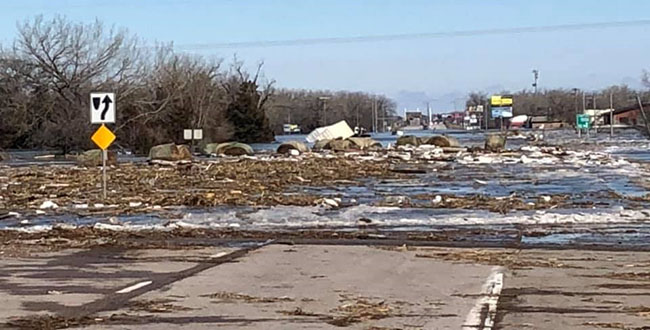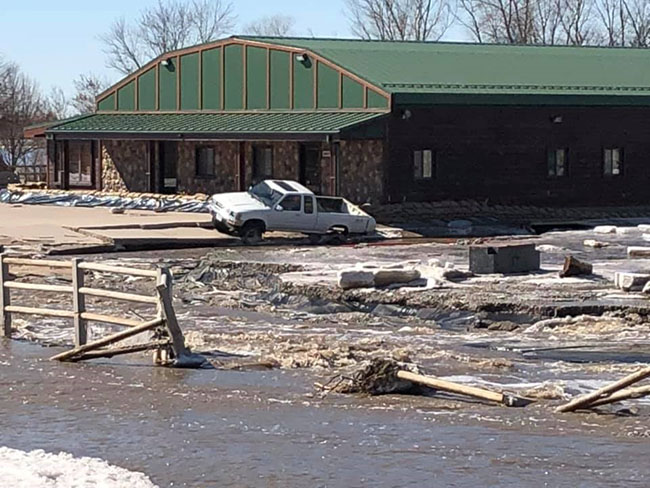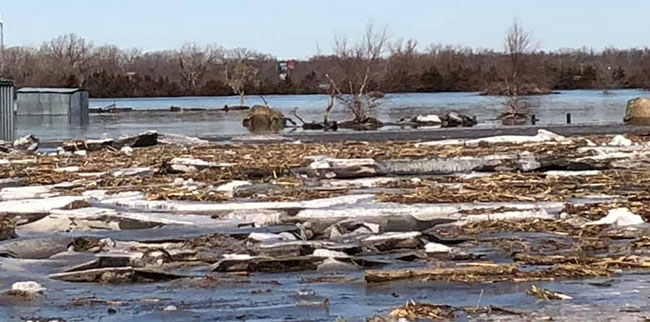
Susan Littlefield (KRVN Rural Radio Network, Surprise, Nebraska) provided this update from recent flooding in her state: “From a blizzard in the western half of Nebraska to flooding in the eastern half of the state, a lot of man-hours were spent on news coverage and volunteering. Cattle producers were trying to dig cattle out of snow drifts and account for animals, as cattlemen in the east watched flood waters take away their livelihood. For many, the watches and warnings came so fast it was hard to get livestock moved to higher ground. One producer shared a video via Facebook that said it came down to saving their lives or the cattle. The ‘girls’ (cattle) were going to have to fend for themselves. All the time she is talking, you can sense the tears that were rolling down her face. This story was played over and over. We also lost an amazing farmer, James Wilke, as he helped emergency personnel try to rescue a stranded motorist. James and his tractor were swept away when the bridge gave way. As we wrap up the month of March, the dollar amounts are coming in the billions as homes, farms, buildings and livestock are examined. With the help of the National Guard many cattle that would be going hungry are receiving hay via helicopter drop. Donations of hay are coming into our state from the Dakotas, Texas, Oklahoma, Montana and Minnesota. Conversations with producers have been tough as they tell the story of cow/calf pairs lost, trying to decide how they will rebuild and for some if they will. At one point more than 2,000 miles of roads in our state were under water and 70 of the 93 counties declared a disaster.”

Littlefield remembers watching the flooding in 2011 along the Missouri River and watched it come back again this year: “Never did we think that we, in the middle part of Nebraska, would be dealing with such devastation. We have roads that are gone. County and township governments are worried how they are going to get these roads back in shape ahead of spring planting. Speaking of planting, there is worry among many that it will be late if at all. That’s another hit to the pocketbook for those in the ag industry and beyond. It comes as no surprise that our news coverage has had a different feel the past couple of weeks as we talk about the flooding, blizzards, and now clean-up efforts. We have added an extra program in the 5 p.m. hour just to share all the information that those in the ag industry need to know.”

Littlefield added thanks to her NAFB family in the midst of this crisis: “I also want to say thank you to all the farm broadcasters who reached out to us, first to see how we were doing and then asking if we had time to be on the other side of the microphone to tell the story of what was going on. The outpouring of concern was felt and welcomed by all. As for my place, we watched the Big Blue start to come out of her banks, spent an afternoon with other fellow firefighters sandbagging our little town, and then got to spend four days of quality time with my younger two children as the river went over the roads and kept us home. We have a creek that runs through our place, and it was over its banks, so the pasture and alfalfa fields don't look so hot right now. A fence will have to be rebuilt, and we take a different route when headed east as the road is washed out, but we are safe. We didn't lose livestock, and we count our blessings as many around us are in a different boat.” Littlefield served as NAFB President in 2015 and was named Farm Broadcaster of the Year in 2016.
